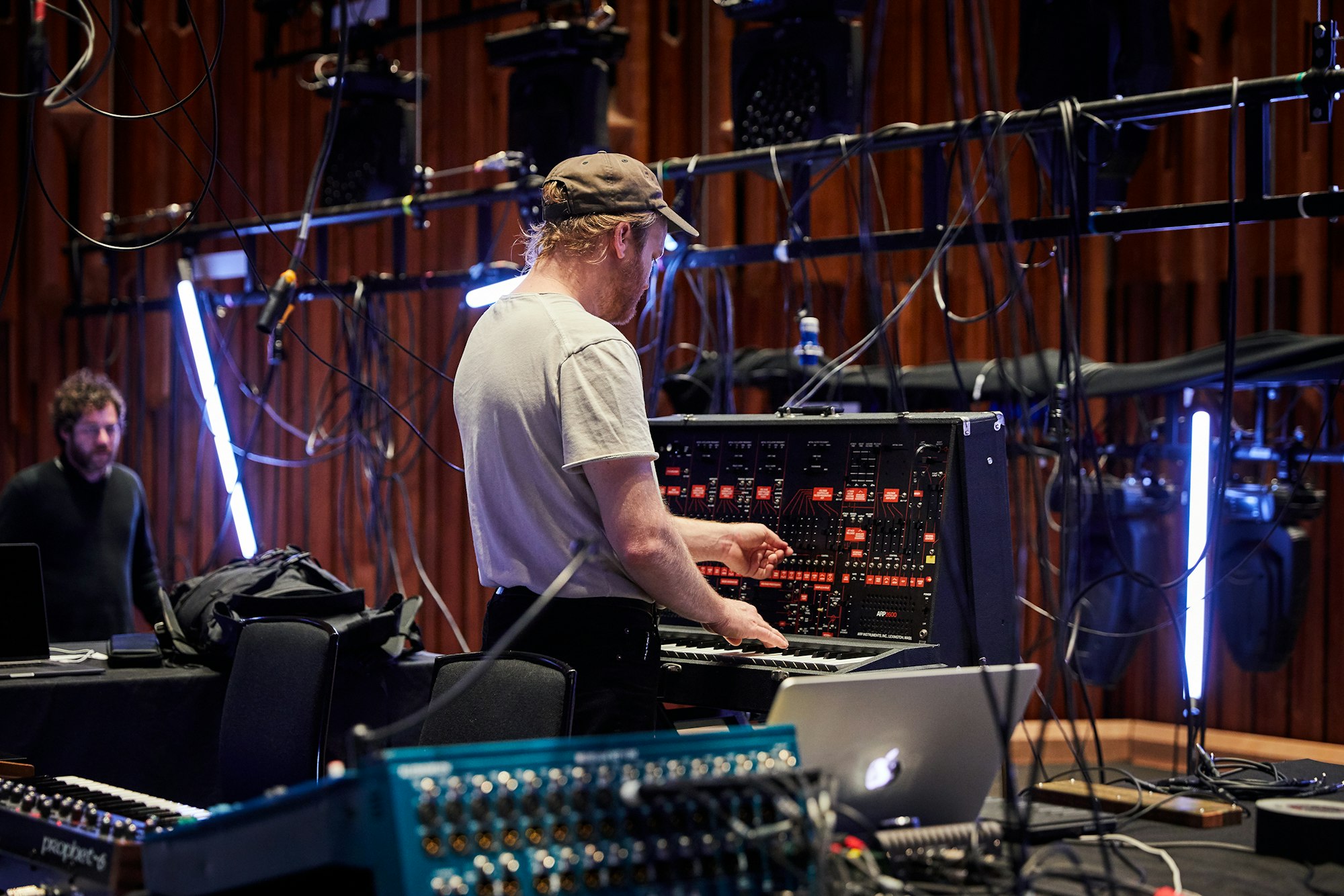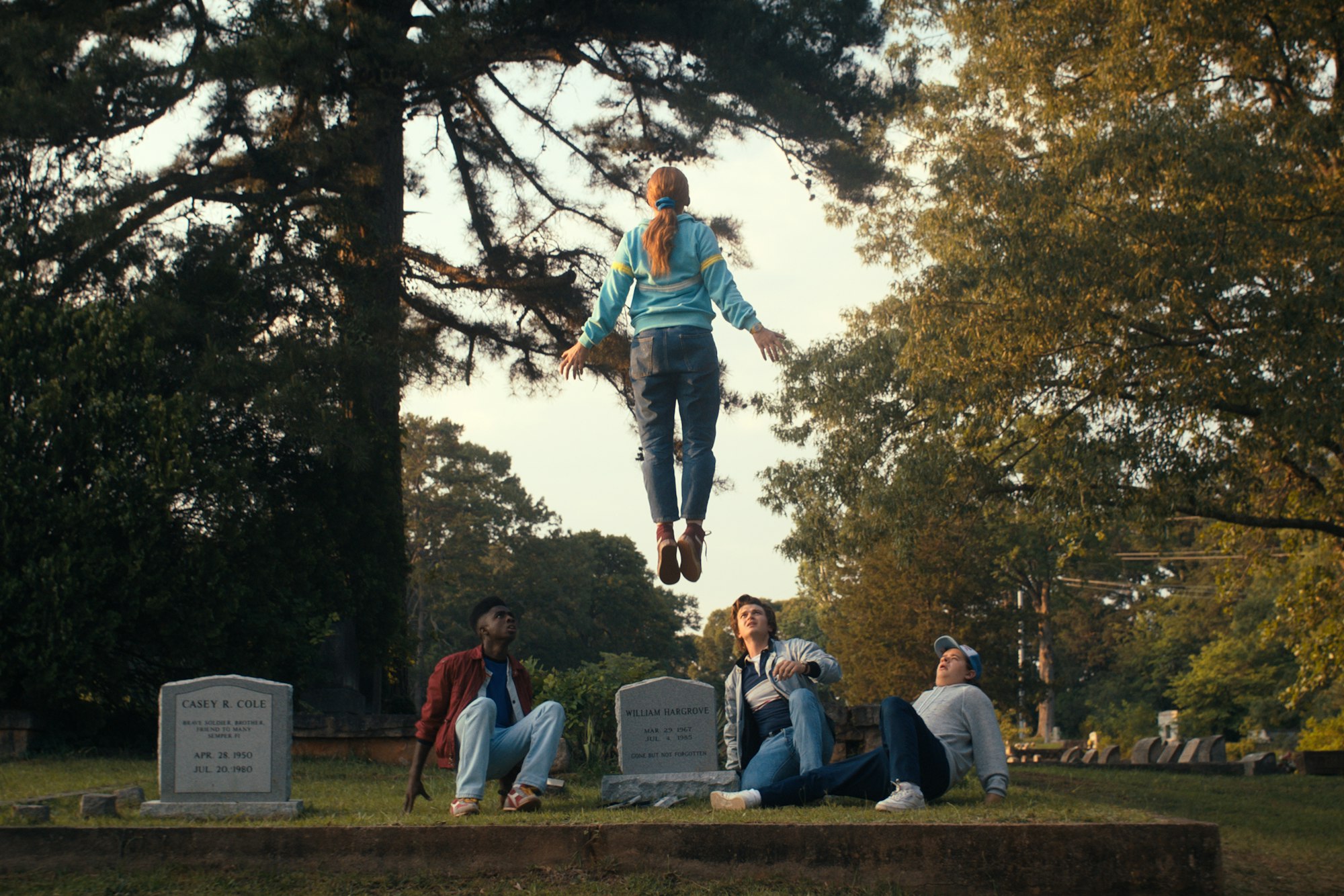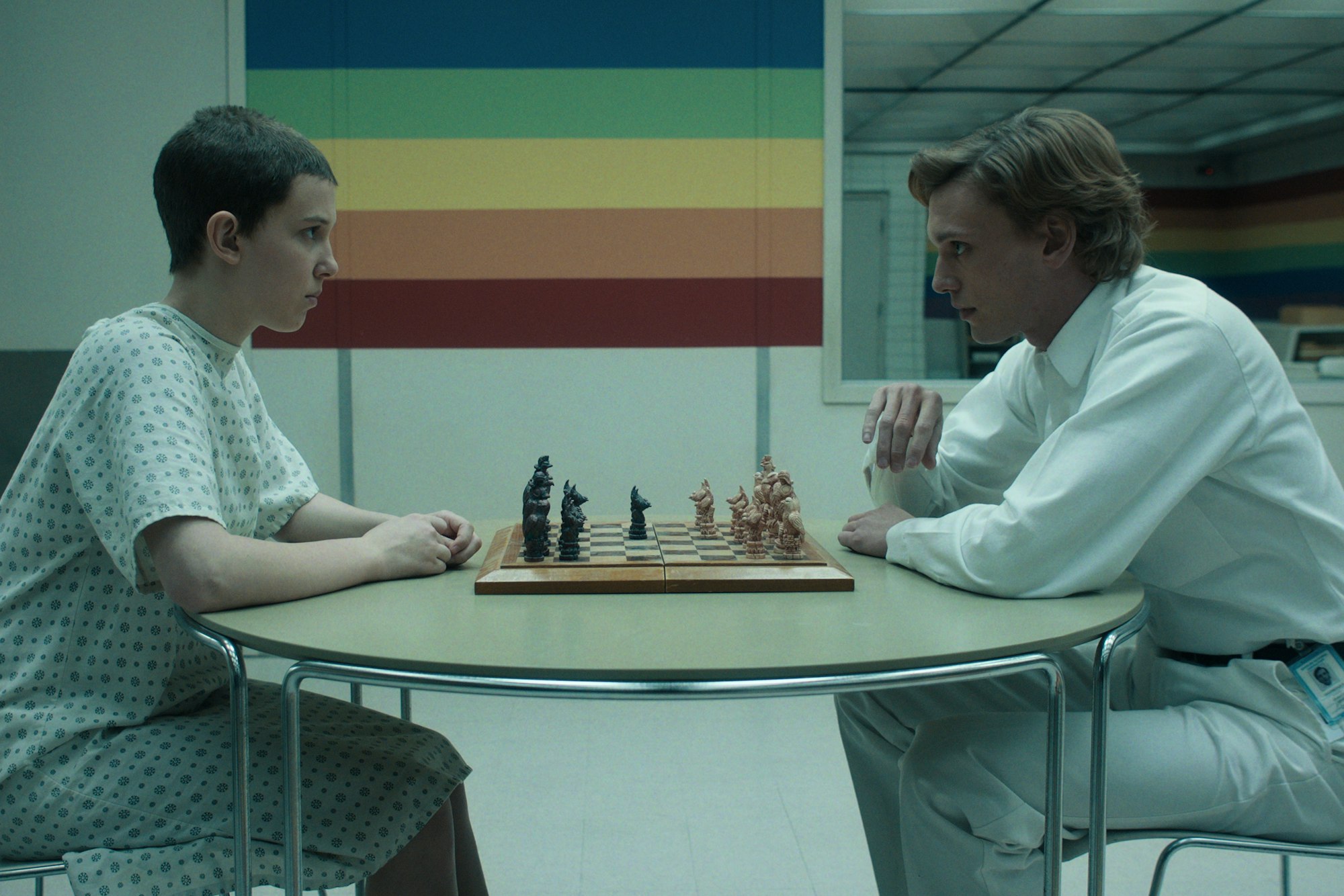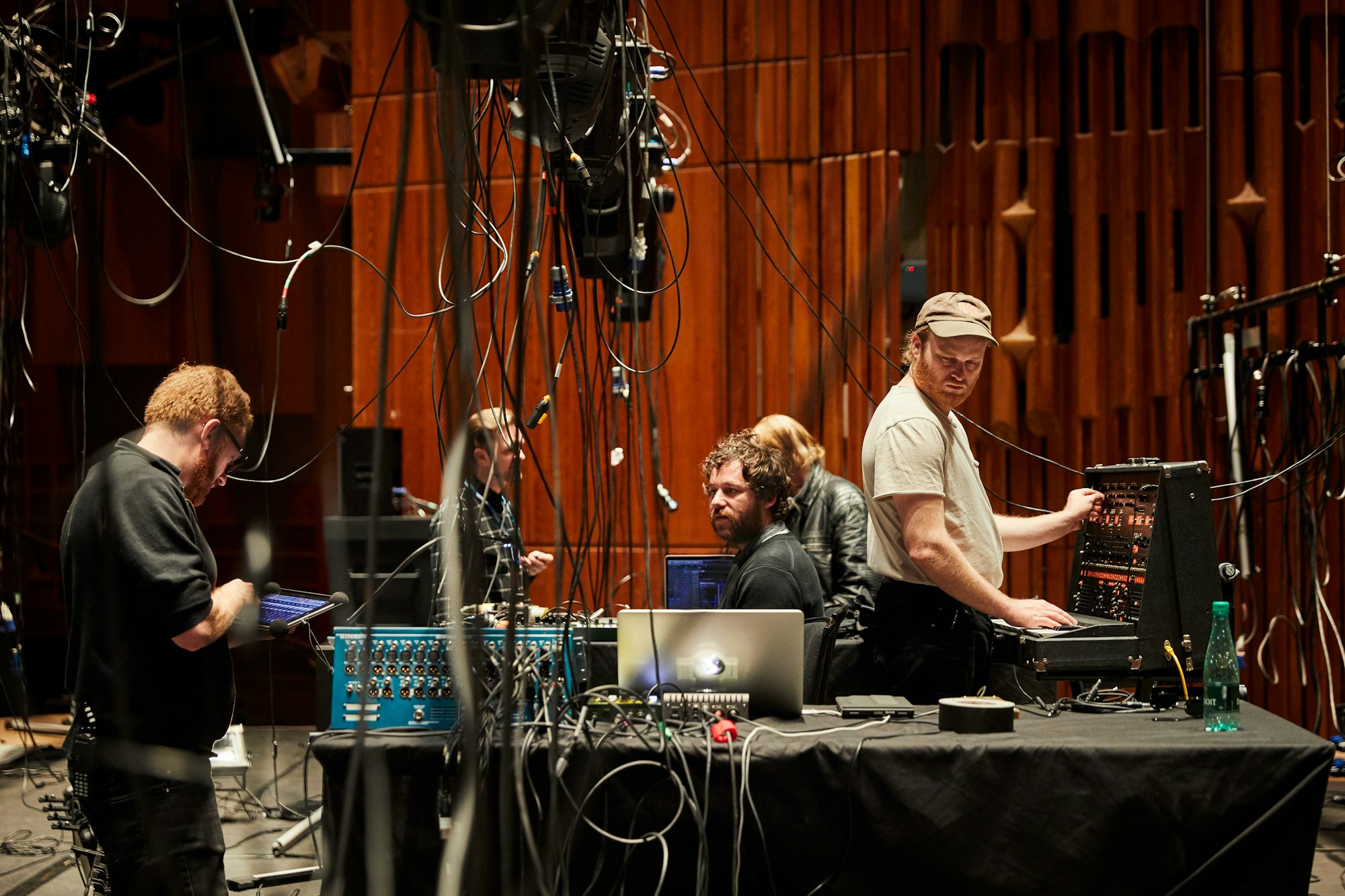Words by Jerry Smith
Since making its 2016 debut, Netflix’s smash hit series, Stranger Things, has become a pop-culture staple. Spawning action figures, clothing, and memorabilia, the show which focuses on a group of kids trying to survive monsters and more quickly became a hit with viewers.
A big part of what makes Stranger Things so captivating lies within the show’s soundtrack composed by Kyle Dixon & Michael Stein. Half of the Texas-based band S U R V I V E, the pair have quickly established themselves as pioneers of bringing electronic-based film scores back into the limelight. Equal parts nostalgia and modern synth masterwork, Dixon & Stein have already cemented their place in electronic music, thanks to their knack for creating a score that transports the show into something akin to spending time with your friends…just with an alternate dimension thrown in for good measure.

On a Zoom video call, we spoke with Dixon & Stein, covering everything from their go-to kit, working with the Duffer Brothers, to the Nightmare on Elm Street meets coming of age fourth season. When asked about their thoughts on Strangers Things making synth music a household thing again, the pair jumped into the pros and cons of that. Dixon seems to light up at the idea that something outside the traditional box has found its way into homes around the world. “We’ve put a bunch of weird shit into the show, sound-wise. I mean, borderline power electronic noise music. That’s in a popular show that a lot of people watch, that’s very exciting to me.” With the good though, comes the downside which Dixon adds, “If there was a negative side to it, I’d say it was that because the show is so popular, some people have said, “I would love to get the guys from Stranger Things to work on our movie, but it’s super popular, they’re probably not available.” And they’d go hire someone else and have them try to sound like what we do on the show. They could have just called us! (Laughs). We were sitting there, doing nothing!”
We needed to bring the Prophet 6 back. We used it so much in the first few seasons, especially the first one. It really is a huge part of the sound of the show.
To create that signature Stranger Things sound, the ‘why fix what isn’t broken’ mentality is deep-rooted within the duo. Discussing what makes that iconic sound, their answer lies in the Prophet 6, Logic, and a few other reliable pieces of machinery mixed between analog and digital. After spending half of the season without it, Stein states, “We needed to bring the Prophet 6 back. We used it so much in the first few seasons, especially the first one. It really is a huge part of the sound of the show. So much has happened in the hardware synth world over the past few years. When we got the Prophet 6, we said, “Great, an analog synthesizer that has presets!” It was a poly-synth, sounds great and we could save sounds. That wasn’t always available in a way we were interested in, prior to that.”
Both of the composer's talk gear like kids in a candy store, their passion for collecting shines brightly with the mention of their favorite instruments and sounds. “The Oberheim Matrix 1000, the ARPS like the 2600, Solus, Odyssey. Along with the Prophet 6, those are the core parts of what makes Stranger Things,” Dixon states, Stein adds, “If I look back on the instruments we used on the theme song for the show, they’re still my favorite instruments and we still use all of them.”

Using Logic as their go-to DAW, the composers are quick to state how utilizing the program over time has helped them work more efficiently. “We use the same DAW we’ve always used, Logic, I think we’ve just got more efficient at using it (Laughs). When we started, most of the sequencing would be done on an MPC, so we would record all of these sessions and they’d all be at 120bpm. The music wouldn’t be at 120, but we were using it almost like a tape recorder.”
With each season, Stranger Things has upped the ante in every aspect of production, the music being no exception. The need for more music and an ever-building world made for big changes in not only the duo’s workflow but also how the pair would eventually record their sessions. “Early on, a lot of our cues would be 3, 4, maybe 5 tracks going at once. They weren’t that intensive, so we could open them up and it would have the entire episode’s music loaded. Now, with the size of the show and the VFX included, the music has become a lot denser. In some of THOSE sessions, a single episode is sometimes hard for a computer to run and that’s for one piece of music.”
With season four being bigger and even more all-encompassing, the pair were averaging over an hour of music being written for each episode. Developing a shorthand with co-directors Matt and Ross Duffer not only was necessary but a blessing too. “We were lucky that we were able to talk to them before the season, quite a bit, to discuss the plot, new characters, and so on. Once everything started rolling, our back and forth with them on this season was a lot more limited than usual,” Stein says. It was really great that we did develop trust with them to let us do what we wanted creatively. We wouldn’t have had the time to do alternate versions if they hadn’t liked it, so it was great to have that trust. This season was crazy.”
At the beginning of each season and after those initial discussions preliminary “sketches”, to pinpoint where each season is heading musically were created. “We objectively spot the sessions in our heads, asking ourselves, “What is this and what is it trying to achieve?` Stein says before Dixon further articulates the process. “This season, it was really leaning into the supernatural murder thing, that’s kind of how they described Vecna to us, a supernatural serial killer. Somewhat like a Freddy Krueger or maybe something out of Hellraiser. So they told us, “Hey, you guys don’t have to write as much comedy music this season.”
It wasn’t scoring to picture, but creating ideas and discovering what the sounds could become. That’s always the best part of the process.

While previous seasons sporadically gave the duo a chance to see a linear cut of the series prior to scoring, the fourth outing saw Dixon & Stein working on various scenes and sequences out of order. “We worked on the last episode right in the middle of the process. We were like, “What does this mean?” When ideally, we’d be working on episode five, because of the VFX needed, we were instead working on the middle of the season’s final episode, so the VFX can get done in time. We didn’t even know what was going on, so we’d laugh and say, “this is a really confusing show!” (Laughs). Then we’d realize there were around five hours that happened before that, that sets it all up and makes sense,” Dixon explains.
Working around the clock to get season four’s music done, they hit the ground running. “There was so much work to do, that to put it into context, we went to the premiere of the first half of season four and we were thinking, “This feels so weird, because we have so much work left to do on score for the season, why are we even at the premiere?” Stein adds, “There weren’t any breaks. Once it kicked off in October, it was day after day.”
While the duo mentions October being their starting point, Dixon & Stein began early brainstorming a good two years prior before the season was then postponed due to the pandemic. Never ones to be deterred, the duo spent that time figuring out other ventures to fill in the now-vacant sections in their schedules. Dixon states, “You’d think that getting into everything and then having it shut down for a bit would knock us off of that groove, but we were actually able to get a lot of stuff rolling. We did some films, worked on techniques, and developed a good workflow. We created new action sounds and created new approaches that helped with the horror of this season, so the time during the pandemic helped. It allowed us to put a fair amount of thought into Vecna and how his stuff would sound. Vecna and also the Russia subplot, those were the parts we put a lot of time into figuring out.”

Jumping into the most ambitious Stranger Things adventure yet, the need to determine the sound of season four was something Dixon and Stein spent time working on early in the process. Speaking on the preliminary “sketches,” Dixon explains the process. “It wasn’t scoring to picture, but creating ideas and discovering what the sounds could become. That’s always the best part of the process because it’s the only time you really get the freedom to experiment.” Gaining the trust of the Duffer brothers to play within a specific feeling or tone of the show, but never being held back by recurring themes allowed Dixon and Stein to bring their own sensibilities to what makes the Netflix series so appealing. “We have more of a tonal palette and a mood, whether it’s something environmental or what’s happening with the character plot. We’re never just modulating the same melody into different scenarios, but we do have a specific sound we like to play within.”
As I'm sure most of you are now aware, the second instalment of Stranger Thing’s fourth season has already proven its lasting power, breaking records with viewership numbers, as well as garnering positive reviews. Now with the show’s most ambitious season to date in the faint background, Kyle and Michael are finding time to put finishing touches on the next S U R V I V E record, geared for a 2023 release. While some fold under pressure, the duo seems to succeed most when the stakes are high.
